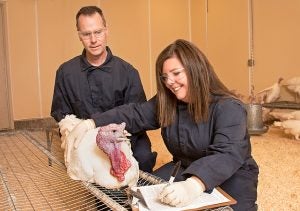As producers prepare for the peak highly pathogenic avian influenza season in the spring and summer months, the U.S. Department of Agriculture announced that they’re testing a number of potential vaccines.
The announcement came during an April 13 roundtable discussion with poultry industry stakeholders.
Initial data from the animal study with a single dose of the vaccine are expected to be available in May, while the researchers expect to have two-dose vaccine challenge studies with results completed in June.
Should these trials prove to be successful and should the USDA opt to continue their development, the agency will then identify vaccine manufacturers and enter into a dialogue with them to gauge their interest in the production of these vaccines.
However, before those vaccine manufacturers are identified, several stages must be discretely completed, including feasibility work and product label submission and review.
While the whole process usually takes up to three years, emergency situations may expedite the process. The agency estimated that in a best-case scenario, there would be a 18 to 24 month timeline before having a vaccine that matches the currently circulating virus strain, is available in commercial quantities, and can be easily administered to commercial poultry.
“Since the first case of HPAI was confirmed in a commercial flock in the U.S. in Feb. 2022, USDA has followed Secretary Vilsack’s clear direction to quickly identify cases and respond immediately to stop the virus from spreading,” said Acting Deputy Secretary Kevin Shea.

USDA says current control measures are working
According to the USDA, as of April 2023, improved biosecurity measures by the commercial industry have vastly reduced the number of detections in the commercial sector.
For example, in March 2022, there were a total of 51 commercial poultry HPAI detections. In March 2023, there were seven commercial poultry detections, a decrease of 85 percent from the previous year.
The USDA’s APHIS continues to work with state and industry partners on robust surveillance and the quick eradication of positive flocks, especially as we enter the warmer months when cases tend to increase.
“Thanks to collaborative state and industry partnerships and enhanced national animal disease preparedness and response capabilities, we are successfully controlling this outbreak and mitigating its impact on U.S. poultry production and trade.”


